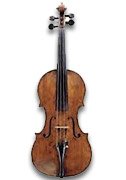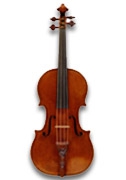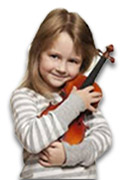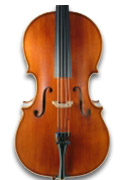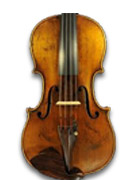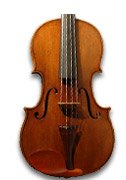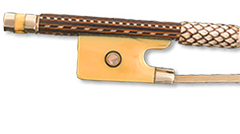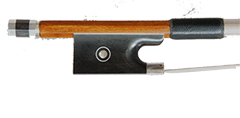The French bow makers
Introduction
In the realm of string instruments—violin, viola, cello, and bass—the bow is not merely an accessory but a vital extension of the instrument itself.
The bow's construction, balance, and responsiveness significantly influence the tone, articulation, and overall expressiveness of the music.
French bow makers have long been revered for their exceptional craftsmanship, innovative designs, and enduring influence on both the art of bow making
and the broader world of music.
This article delves deeply into the evolution of French bow making, exploring its origins, key figures, schools of thought,
and lasting impact on global music culture.
The Early Days: Setting the Stage for French Bow Making
The history of bow making extends back centuries, with the bow evolving from a simple tool into the sophisticated and nuanced implement used by musicians today.
Early bows were rudimentary, often little more than a curved stick with horsehair, primarily concerned with producing sound rather than offering
the nuanced control required for more advanced musical expression.
The development of the modern bow was driven by the changing demands
of music, particularly during the late Baroque and Classical periods when compositions grew in complexity and expressiveness.
As the musical landscape evolved, so did the expectations placed on bows.
Composers and performers began to seek out bows that could offer
greater dynamic range, more precise articulation, and the ability to project sound more effectively.
This shift in demand set the stage for the emergence of
a new generation of bow makers, who would revolutionize the craft.
Among these pioneers, François Tourte stands out as the figure who laid the foundation
for what would become the French school of bow making.
François Tourte: The Revolution of the Modern Bow
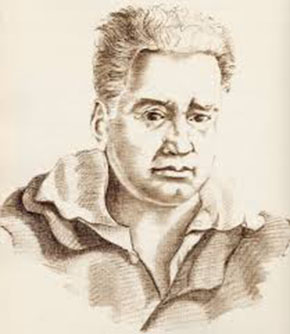
François Tourte.
François Tourte (1747-1835) is often hailed as the father of the modern bow.
Born into a family of watchmakers, Tourte initially followed in his father’s
footsteps before discovering his true passion for bow making.
His contributions to the craft were revolutionary, setting new standards that have endured for centuries.
Before Tourte, bows were shorter and lacked the inward curve that characterizes modern bows.
These earlier designs limited the bow’s flexibility and range of motion, making it difficult for musicians to achieve
the full dynamic and expressive potential of their instruments.
Tourte’s first major innovation was to standardize the length of the bow, setting it at approximately 74-75 centimeters for the violin.
This standardization was crucial, as it allowed for greater consistency in bow production and improved the balance and control musicians could achieve.
Tourte’s most significant innovation, however, was the introduction of the concave shape to the bow stick.
By curving the bow slightly inward, Tourte created a design that offered more elasticity and better balance.
This innovation allowed musicians to produce a wider range of dynamics,
from the softest pianissimo to the most powerful fortissimo, with greater precision and ease.
The concave bow also made it easier to control the speed and pressure of the bow stroke,
enabling more nuanced articulations and a more refined sound.
Another of Tourte’s groundbreaking contributions was his use of Pernambuco wood, sourced from Brazil.
Pernambuco is dense, strong, and flexible,
making it the ideal material for creating bows that could maintain their shape while offering the necessary resilience.
Tourte’s choice of this wood, combined with his meticulous attention to detail, resulted in bows that were not only highly
functional but also aesthetically beautiful.
Tourte’s bows quickly became the gold standard for musicians across Europe.
His designs were so successful that they have remained virtually unchanged in their fundamental aspects,
serving as the foundation for all future developments in bow making.
Tourte’s influence on the craft was profound, and his work laid the groundwork for the French school of bow making that would
dominate the field for generations to come.
The Emergence of the French School: Dominique Peccatte, Jean Pierre Marie Persoit, and Nicolas Maire
Following François Tourte, the French school of bow making flourished, with several key figures contributing to its development and refinement.
Among these were Dominique Peccatte, Jean Pierre Marie Persoit, and Nicolas Maire, each of whom brought their unique approach
to the craft while adhering to the principles established by Tourte.
Dominique Peccatte (1810-1874) is often regarded as one of the most significant bow makers after Tourte.
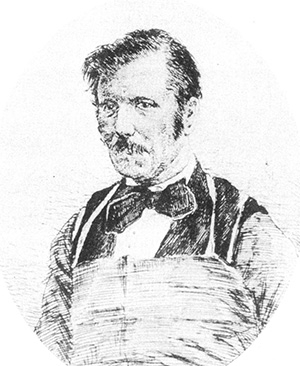
Peccatte began his career as a violin maker but later transitioned to bow making, where he quickly gained a reputation for his robust and powerful designs.
His bows are characterized by a slightly heavier feel, which allowed musicians to produce a more forceful sound.
This made Peccatte’s bows particularly popular among soloists who needed to project their sound over an orchestra.
Peccatte’s bows are also noted for their strong, angular heads and the use of the “Vuillaume” style frog, a design element that he helped popularize.
His work represented a continuation and evolution of Tourte’s principles, with an emphasis on strength and durability.
Peccatte’s influence on subsequent generations of bow makers was profound, as many of his apprentices and followers continued to develop his ideas.
Jean Pierre Marie Persoit (1783-1854) was another key figure in the French school.
Persoit’s bows are often described as elegant and refined, offering a different type of responsiveness compared to Peccatte’s
more robust designs.
His bows are lighter and more flexible, making them ideal for delicate and nuanced playing.
Persoit’s work is highly prized by musicians who seek a bow that offers clarity and precision, particularly in the performance of intricate passages.
Persoit’s contributions to the art of bow making include innovations in the design of the frog and the head, which helped to improve the balance and handling of the bow.
His bows are considered masterpieces of craftsmanship, and they remain highly sought after by collectors and players alike.
Nicolas Maire (1800-1878), who worked closely with Peccatte, was another important figure in the French school.
Maire’s bows are known for their fine balance and exquisite craftsmanship.
He placed a particular emphasis on the aesthetics of the bow, ensuring that each piece was not only functional but also visually stunning.
Maire’s bows often feature intricate inlays and decorations, reflecting his deep commitment to the artistry of bow making.
Maire’s influence extended beyond his own work, as he trained and influenced many other bow makers who would go on to shape the future of the craft.
His legacy is one of beauty and precision, and his bows are cherished for their ability to produce a rich, warm tone.
Together, Peccatte, Persoit, and Maire solidified the French school’s reputation as the leading force in bow making.
Their work, while rooted in the principles established by Tourte, also introduced new ideas and techniques
that would continue to influence the craft for years to come.
The Mirecourt Tradition: A Hub of Bow Making Excellence
While Paris was the epicenter of early French bow making, the small town of Mirecourt in northeastern France became a major center for the craft in the 19th century.
Mirecourt was already known for its production of musical instruments, but it was the establishment of bow making workshops that truly put the town on the map.
Mirecourt’s rise to prominence in the world of bow making was due in large part to the town’s rigorous apprenticeship system.
Young bow makers in Mirecourt were trained in the traditional techniques of the craft, ensuring that the high standards of
French bow making were maintained and passed down through generations.
Charles Nicolas Bazin (1847-1915), One of the most influential figures from Mirecourt.
Bazin was a prolific maker whose bows are known for their consistency and reliability.
His workshop produced bows for many prominent musicians, and his work played a significant role in the dissemination
of French bow making techniques across Europe.
Bazin’s bows are characterized by their solid construction and excellent balance.
He adhered closely to the principles of the French school but also introduced his own innovations,
particularly in the design of the frog and the use of materials.
Bazin’s bows were widely used by musicians in both France and abroad, and his influence on the craft was substantial.
Eugène Sartory (1871-1946), who is perhaps the most famous bow maker of the 20th century.
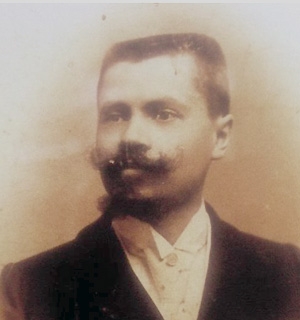
Sartory’s bows are celebrated for their perfect balance and ease of handling, making them a favorite among professional musicians.
Sartory’s work combined the best qualities of the French tradition with new innovations,
such as the use of metal fittings and a slightly broader head design.
Sartory’s bows are known for their robustness and durability, qualities that made them particularly popular among orchestral players
who needed a bow that could withstand the demands of frequent use.
His bows also offer a smooth, even response across the entire range of the instrument, making them ideal for both solo and ensemble playing.
Mirecourt’s contribution to bow making extends beyond individual makers.
The town became a hub for the mass production of bows, with workshops producing high-quality bows at a range of price points.
This allowed more musicians to access the benefits of French bow making, even if they could not afford a bow made by one of the great masters.
10 More Famous French Bow Makers
The tradition of French bow making is rich and varied, with many other significant figures contributing to its legacy.
Here are ten more famous
French bow makers whose work has left an indelible mark on the craft:
1. François Nicolas Voirin (1833-1885).
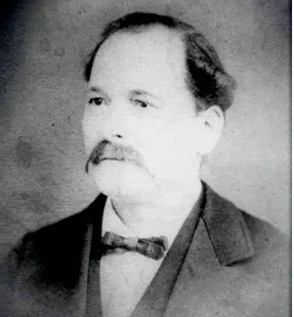
François Nicolas Voirin, often referred to as the "modern Tourte," was a bow maker who greatly influenced the French school.
A nephew of Jean Baptiste Vuillaume, Voirin’s bows are known for their elegant design and lightness.
He introduced a more delicate head and refined the frog's design, leading to bows that offered excellent balance and control. Voirin’s innovations helped to shape the modern bow, and his work is highly regarded for its precision and beauty.
2. Joseph Arthur Vigneron (1851-1905).
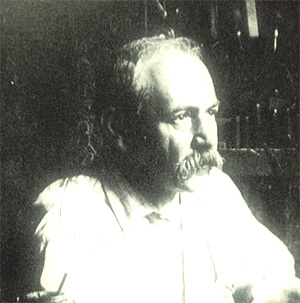
Joseph Arthur Vigneron was a prominent French bow maker who trained under Charles Nicolas Bazin.
Vigneron’s bows are characterized by their strong, rounded sticks and robust feel, offering musicians a powerful and responsive tool.
He is known for his meticulous craftsmanship and attention to detail, with each bow crafted to produce a rich, warm tone.
Vigneron’s bows are particularly valued by soloists for their ability to project sound with clarity and power.
3. Jules Fétique (1875-1951)
Jules Fétique, a student of Eugène Sartory, was known for his fine craftsmanship and innovation in bow design.
Fétique’s bows are noted for their exceptional balance and strength, making them popular among both soloists and orchestral players.
He was awarded the title "Meilleur Ouvrier de France" (Best Craftsman of France) in 1924, a testament to his skill and dedication to the craft.
Fétique’s bows are highly prized by collectors and musicians alike for their beauty and playability.
4. Louis Morizot (1874-1957)
Louis Morizot, also known as Morizot père, was the patriarch of the Morizot family of bow makers, a dynasty that had a
significant impact on French bow making in the 20th century.
Morizot’s bows are known for their reliability and fine craftsmanship.
His work combines the traditional techniques of the French school with his unique innovations,
resulting in bows that are both functional and aesthetically pleasing.
The Morizot family workshop produced bows for many of the leading musicians of the time, and their legacy continues to be celebrated.
5. Victor Fétique (1872-1933).
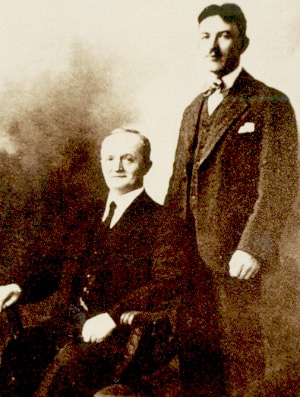
Victor Fétique, the brother of Jules Fétique, was another master bow maker whose work is highly esteemed.
He trained under Charles Nicolas Bazin and later worked with Eugène Sartory before establishing his own workshop.
Fétique’s bows are known for their excellent balance, strength, and refined aesthetics.
He was awarded numerous prizes for his work, including a gold medal at the 1927 International Exhibition in Geneva.
Victor Fétique’s bows are cherished for their ability to produce a rich, expressive sound.
6. Léon Bernardel (1853-1931)
Léon Bernardel was a prominent bow maker and violin maker, known for his exceptional craftsmanship and attention to detail.
He came from a family of distinguished luthiers and bow makers and was trained by his father, Ernest Auguste Bernardel.
Léon Bernardel’s bows are highly regarded for their balance, elegance, and tonal quality.
His work reflects the highest standards of the French school, and his bows are prized by musicians and collectors alike.
7. Marcel Lapierre (1907-1979)
Marcel Lapierre was a distinguished French bow maker who was known for his innovative designs and exceptional craftsmanship.
He trained under several prominent bow makers, including Louis Morizot and André Vigneron.
Lapierre’s bows are characterized by their excellent balance, flexibility, and tonal quality.
He introduced several innovations in bow design, including changes to the camber and weight distribution,
which greatly influenced modern bow making.
Lapierre’s work continues to be highly valued by musicians and collectors.
8. Claude Thomassin (1865-1942)
Claude Thomassin was a renowned French bow maker whose work is highly sought after by musicians and collectors.
He trained under Charles Nicolas Bazin and later established his own workshop in Paris.
Thomassin’s bows are known for their strength, balance, and refined aesthetics.
He was particularly skilled in crafting bows that offered excellent control and responsiveness,
making them popular among soloists.
Thomassin’s work is considered among the finest of the late 19th and early 20th centuries.
9. Pierre Simon (1808-1881)
Pierre Simon was a distinguished bow maker who worked closely with Dominique Peccatte and later established his own workshop.
Simon’s bows are known for their powerful sound and excellent balance, making them popular among soloists and orchestral players.
He was a master craftsman, and his bows are highly regarded for their strength, flexibility, and tonal quality.
Simon’s work had a significant influence on subsequent generations of bow makers, and his bows continue to be highly valued.
10. Louis Thomassin (1856-1905)
Louis Thomassin, a cousin of Claude Thomassin, was a highly respected French bow maker who trained under his father, Jean Thomassin.
His bows are known for their precision, balance, and excellent craftsmanship.
Thomassin’s work reflects the highest standards of the French school, and his bows are prized by musicians for their ability to produce a rich, nuanced sound.
He was awarded several prestigious prizes for his work, and his bows continue to be highly sought after by collectors and players.
The Impact of French Bow Makers on Global Music.
The influence of French bow makers extends far beyond the borders of France.
Their innovations in design, materials, and craftsmanship have shaped the sound of string instruments around the world.
Musicians in Europe, North America, and Asia have all been impacted by the legacy of French bow making,
with many of the greatest performers in history using bows crafted by French makers.
The French bow’s ability to produce a wide range of dynamics and articulations has made it the preferred choice for generations of musicians.
Whether playing in a grand concert hall or an intimate chamber setting, the French bow has enabled performers to achieve the highest levels of artistry and expression.
The legacy of these master craftsmen continues to resonate in the music of today, as their bows remain an essential tool for musicians seeking to bring their art to life.
Conclusion
The tradition of French bow making is one of the most important legacies in the world of music.
From the revolutionary innovations of François Tourte to the refined craftsmanship of later masters like Dominique Peccatte,
Jean Pierre Marie Persoit, and Nicolas Maire, French bow makers have shaped the sound and technique of string instrument playing for centuries.
Their dedication to the art of bow making, their innovative spirit, and their commitment to excellence have ensured that their work continues to be
celebrated and cherished by musicians and collectors around the world.
As we look to the future, the influence of these master craftsmen will undoubtedly continue to inspire new generations of bow makers and musicians alike.
French bow makers :







